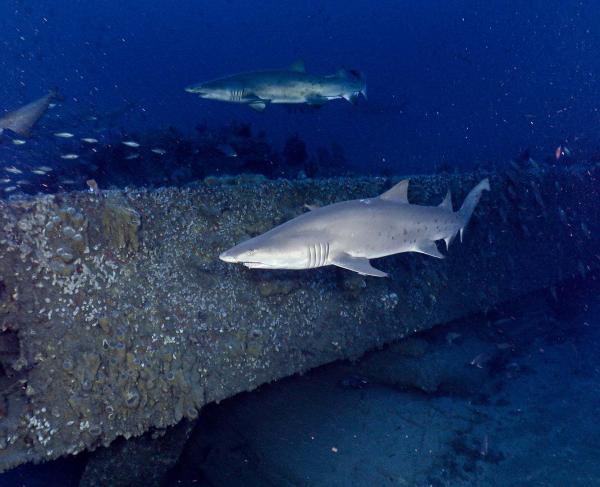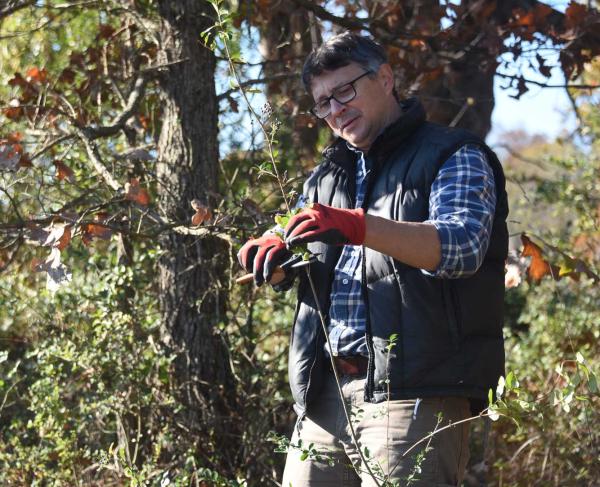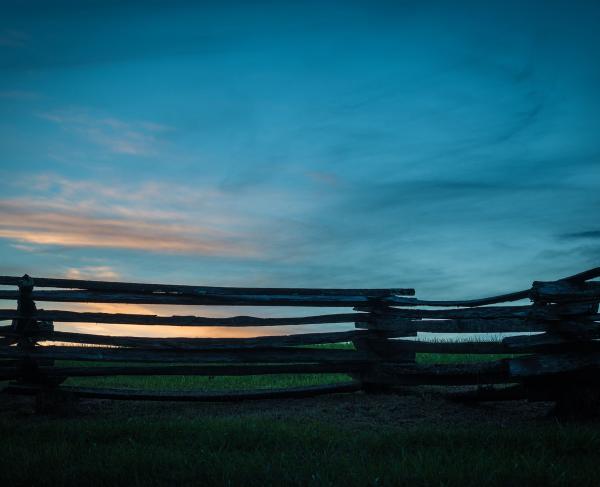Jim Lighthizer’s First Victory
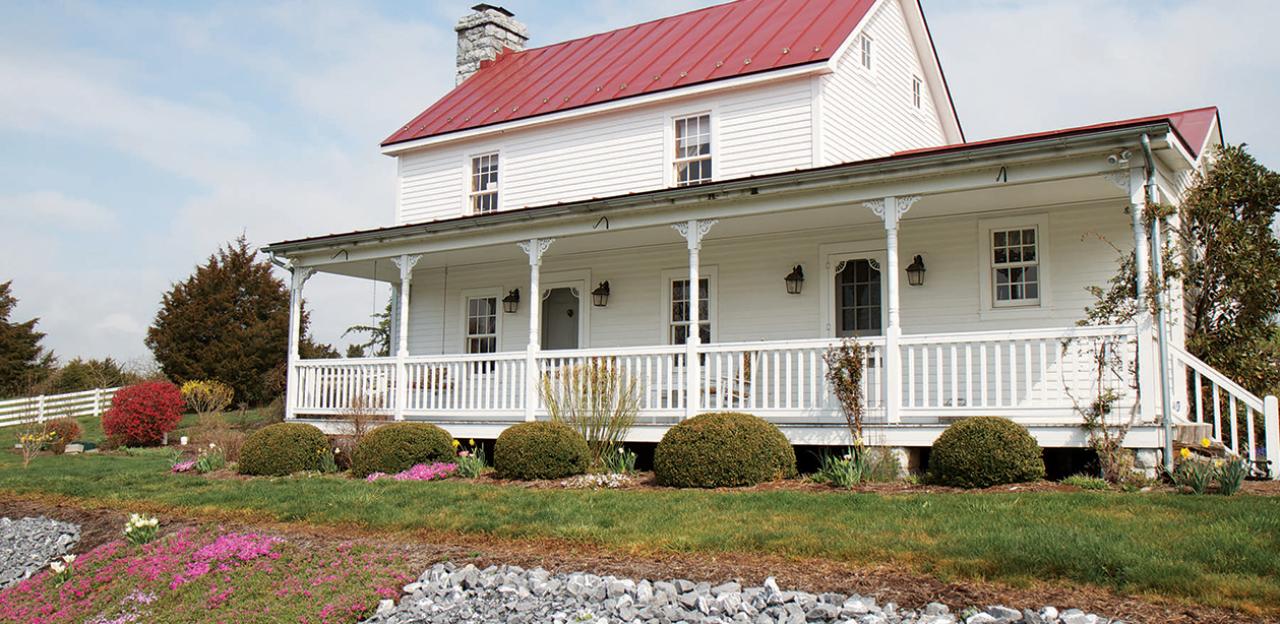
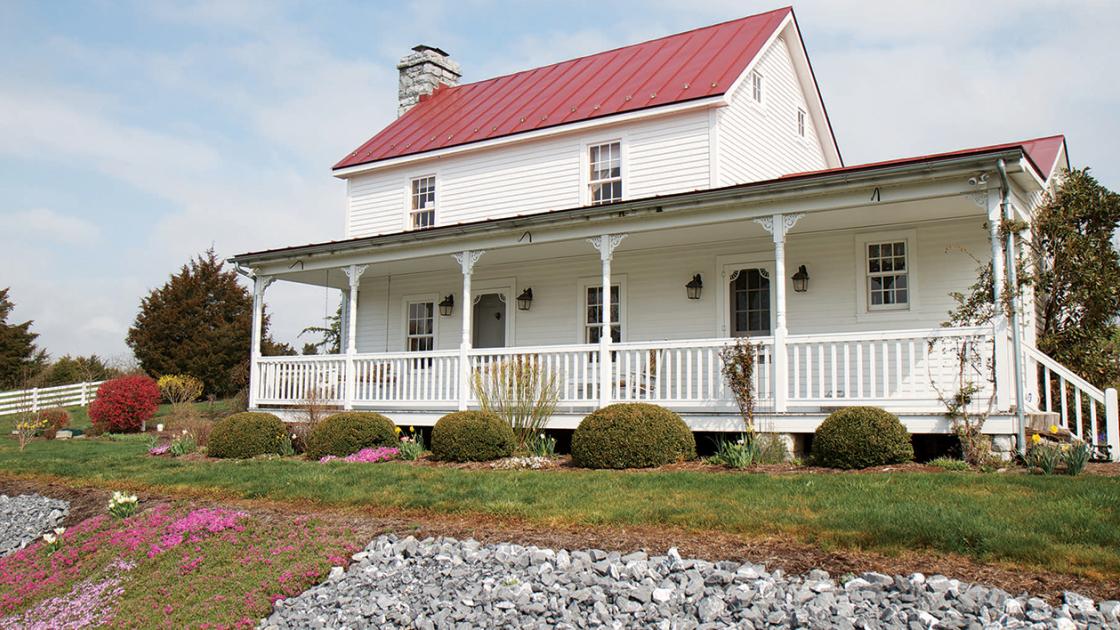
The first national organization devoted to saving Civil War battlefields began saving land in 1988, the year after historians and enthusiasts gathered in a Fredericksburg on July 18, 1987, to create the Association for the Preservation of Civil War Sites (APCWS).
That first acquisition – 8.55 acres at The Coaling at the Port Republic battlefield in the Shenandoah Valley – was a gift. But the APCWS was on its way, and year by year, the grassroots group kept protecting more battlefield land while adding enthusiastic new members. By the mid-1990s, APCWS had more than 6,000 members and was making spectacular saves, including core battlefield land at Fisher’s Hill, Malvern Hill, Third Winchester and Brandy Station.
In 1991, the original Civil War Trust entered the fray – and suddenly there were two national Civil War battlefield preservation organizations. The natural competition between the grassroots APCWS and the more buttoned-down Civil War Trust created friction, and they clashed over membership, government funding and other issues. Like-minded members of both boards found common ground, however, and began working toward a merger of the two organizations.
The merger was approved in November 1999 with the support of most of the board members of both groups. APCWS Chairman Carrington Williams became chairman of the new Civil War Preservation Trust (CWPT), while original Trust board member Jim Lighthizer became its president.
Lighthizer spent much of his first year paying off more than $6 million of debt he inherited from the predecessor organizations, largely using funds from a new federal appropriation for battlefield preservation. But the business of saving land never stopped. And the new, merged board vowed in the year 2000 to shatter all previous standards and save 2,000 acres. As it turned out, not only did the CWPT erase nearly all of its debt, it beat its land acquisition goal, saving 2,421 acres at 18 battlefields in eight different states.
One acquisition that stood out in 2000 was a purchase at the Cross Keys battlefield in the Shenandoah Valley. The heart of that battlefield is the Widow Pence Farm, and when the 51-acre property went up for auction on June 17, 2000, Lighthizer and Williams were in the audience, ready to bid.
In this excerpt from Fighting the Second Civil War: A History of Battlefield Preservation and the Emergence of the Civil War Trust, published by the Trust and Knox Press, author Bob Zeller tells the dramatic story of the purchase of the Widow Pence farm:
In April, Robert K. Krick (a founder of both the APCWS and the Central Virginia Battlefields Trust) had driven to the Shenandoah Valley to give a tour at Cross Keys. The battle at Cross Keys was one of the climactic clashes in Confederate General Stonewall Jackson’s brilliant Valley campaign of 1862. Krick knew the land well, having walked it time and again while establishing where the battlefield was. Before Krick studied the maps, read the battle reports and walked the land, nobody in modern times really knew what had happened at Cross Keys.
The battle’s fiercest fighting occurred around the Widow Pence house. Krick was well acquainted with the home’s residents, Mary Catherine Jarrels and her husband, Warren. Mary Jarrels had lived there since 1921. “First time I walked into her yard, she had no idea it was on the battlefield,” Krick recalled. “And I still wasn’t sure it was the Widow Pence house in that early day. I remember walking into the little kitchen and smelling something good frying, and I said, ‘Oh, that smells good.’ And she said, ‘Well, I’d invite you to stay for dinner but you young people wouldn’t appreciate it. I’m frying dandelion greens from the yard.’ They had a pretty primitive lifestyle. The only water in the house was caught on the roof and poured into a cistern in a lean-to.”
During his trip to Cross Keys that April, Krick knocked on the front door once more.
“I’m glad to see you, Mr. Krick,” Mary Jarrels said in her quiet, direct country manner.
“Oh, well, I’ve always appreciated the chance to walk on this ground,” Krick replied. “It’s so historic. And I love taking people on it.”
“Well, I don’t know if you will be able to do that anymore,” she replied quietly. She and her husband were moving into a retirement home in nearby Harrisonburg, she said, and the Widow Pence farm would be sold at auction in about a month.
“Thank goodness I was out there on a tour,” Krick recalled. “Nobody would have even known about it, I suppose.” He called Lighthizer immediately and said a “really important piece” of the Cross Keys battlefield was soon to be auctioned. Word was that a developer would be bidding.
Lighthizer investigated and found that the Widow Pence Farm had been appraised for $205,000. He contacted the Jarrels and offered to buy it at the appraised value, but they said no — they’d auction it in June. Lighthizer at that time had no available money with which to buy it. But he managed to secure a $200,000 loan from his friend Pat Noonan, president of The Conservation Fund. Lighthizer knew he had a good chance of securing federal battlefield preservation funds through an American Battlefield Protection Program (ABPP) matching grant, but not before the auction.
Unexpectedly, Lighthizer received a call from a Harrisonburg orthopedic surgeon, Irvin Hess, who was interested in the property. Hess had family connections to the battle and his ancestors had owned the adjoining farm.
“I want to buy it to preserve it, but if you’re going to buy it, that’s fine with me,” Hess told Lighthizer.
“I’ll make you a deal,” Lighthizer replied. “Let’s go in 50-50. You own it and I’ll own the development rights. So you’ll own a piece of property with a pre-war house, a pre-war barn and real history. You’ll own it, you just won’t ever be able to develop it.”
“Okay, I’ll do that,” Hess said. “I’ll go up to 175 grand, that’s all my half can go.”
Carrington Williams became keenly interested. “Jim, we’ve got to have that property … We’ve got to have that property,” Lighthizer recalled Williams saying.
“Well, let’s drive out there,” Lighthizer told him. “We’ve got Irvin’s $175,000. We’ve got a $200,000 loan from Noonan. Let’s go buy the thing at the auction.” The hammer was to fall on June 17, 2000.
Lighthizer recalled: “It was one of those country auctions that was a social event where everybody comes. There must have been a couple of hundred people there. Everything is for sale. And the auctioneer goes through the house, room to room. He sells the stove, he sells the old Coke bottles, he sells the silverware, he sells everything. And at the end of the day, the culmination, the height of the day, the crescendo, is he auctions off the property.”
When going through old homes, Lighthizer has a habit of running his hand across the top of door frames “to see if anything is up there.” As he walked through the Widow Pence house, he reached above one door frame, felt a piece of metal and pulled down a chunk of shrapnel from the Civil War. He wondered for a moment whether he should keep it. “I can’t do that,” he said to himself. “I’ll just come back and get it after we buy it.” He put it back up on the door frame.
As the auction for the property started, only two in the large crowd became active bidders — Lighthizer and an agent representing the developer. As the price soared above the appraised value of $205,000, the auctioneer went to $500 increments. “So, the two of us were just raising our fingers, back and forth,” Lighthizer recalled. Lighthizer was ready to spend all $375,000 if he had to. The auctioneer reached $225,000 … $250,000 … $260,000 … $270,000. The developer’s agent dropped out at $288,000 and the auctioneer’s hammer fell.
“Now come on up here and tell this crowd what you plan to do with this property,” the auctioneer told Lighthizer.
Lighthizer took the microphone and announced, “This property is going to be preserved forever as a Civil War battlefield.” The crowd erupted in applause and cheers, and Lighthizer felt goose bumps breaking out — a moment he still savors. A few minutes later, Lighthizer went back to the door frame holding the piece of shrapnel. He reached up there and felt around. It was gone.
Hess and his wife, Nancy, were at a medical conference and could not attend the auction. But they threw themselves into the time-consuming, expensive restoration of the Widow Pence house, which cost several times more than the $144,000 they spent on the property. By all accounts, it was a magnificent restoration.
“It has been restored and it’s just the way it was at the time of the battle — the house, the barn and the property,” said Lighthizer. “So, that was our first victory. Carrington and I were beside ourselves with joy. We were just ecstatic. And that got us rolling. It had a lot of ramifications. It gave us credibility with the Bob Kricks of the world.”
Williams, who died in 2002, was founding chairman of the Shenandoah Valley Battlefields Association, and in 2004, the association installed a wayside exhibit at the Widow Pence Farm at Cross Keys in his memory. It was a time for reflection as Lighthizer stood by the new exhibit with Irvin and Nancy Hess and told the story of the auction. Lighthizer described how he’d found a piece of shrapnel above a door frame while inspecting the house on the day of the auction but left it there, only to find it gone after the sale. “And I saw her give a look at her husband, but she never said anything,” Lighthizer recalled.
By then, the Widow Pence home had been restored, and the Hesses had invited local residents in for a look. One visitor paid particular attention to a display case in the house — a mini-museum where the Hesses kept all the artifacts found on the property. He came to Nancy Hess with the piece of shrapnel. “I found it during the auction,” he said. “But you all have done such a wonderful job here, I want you to have it back.”
Nancy gave the piece of shrapnel to Lighthizer. He had it framed, and it hangs on the wall of his office in Washington, D.C.
****
Lighthizer’s bold action to buy and save the Widow Pence Farm at Cross Keys impressed doubters like Jerry Russell, the prominent battlefield preservation gadfly of the 1970-80s, who wanted and expected results, and helped turn skeptics into supporters. Before long, CWPT would be saving hallowed ground not only by purchasing it, but by fighting developers to prevent the destruction of battlefields — such as at Chancellorsville and the Wilderness — as well as other historic venues.
The business of land acquisition — the first and primary mission from the very beginning of the APCWS — continues apace today, with an average of more than three closings on land deals each month. In 2017, on the 30th anniversary of the battlefield preservation movement, the more than 600 land transactions in the history of the movement are together valued at more than $300 million. The result: more than 46,000 acres saved at 132 battlefields sites in 24 states.

